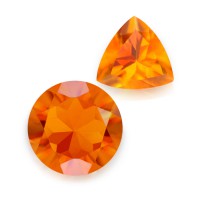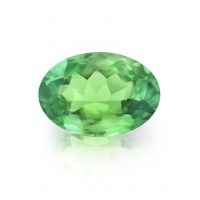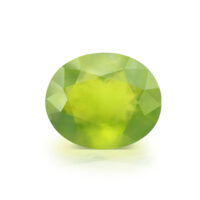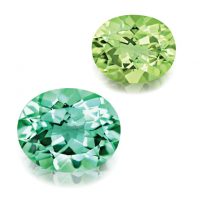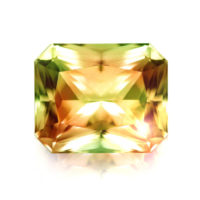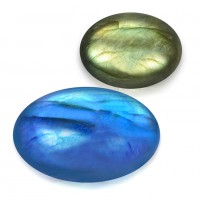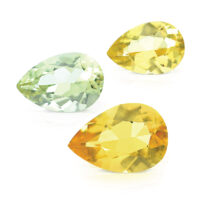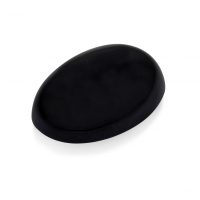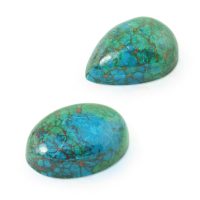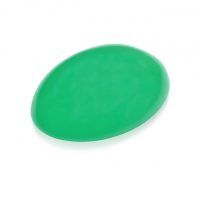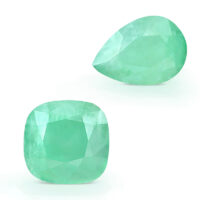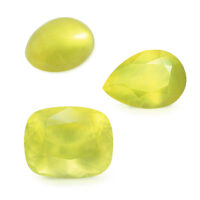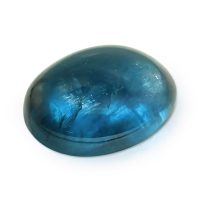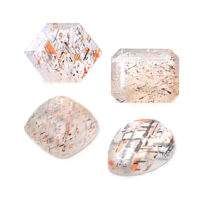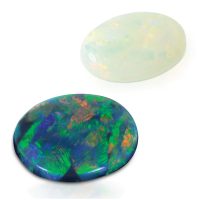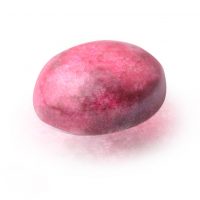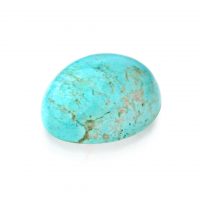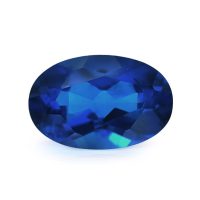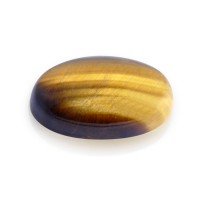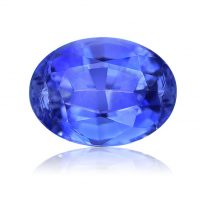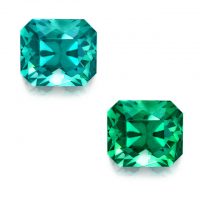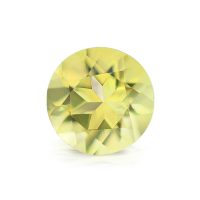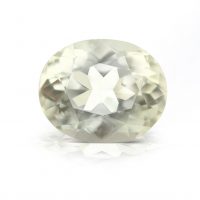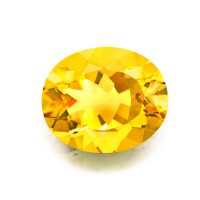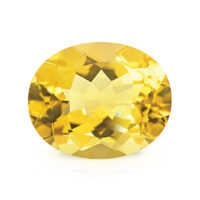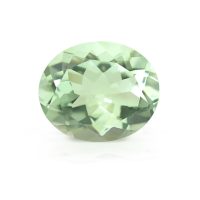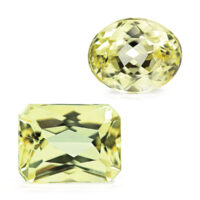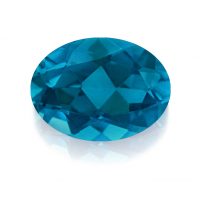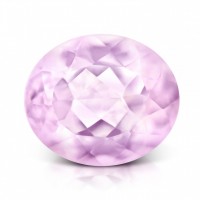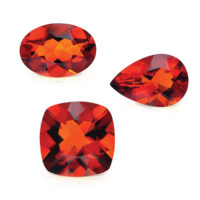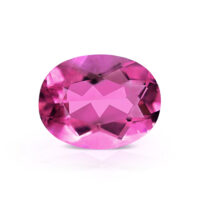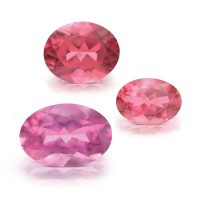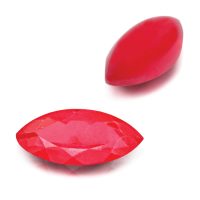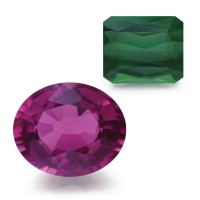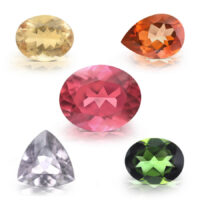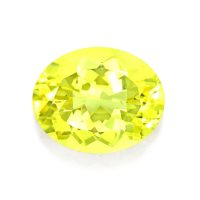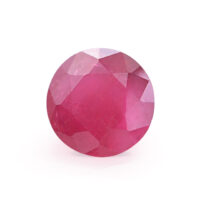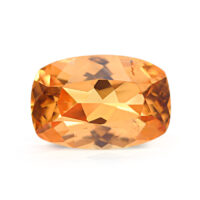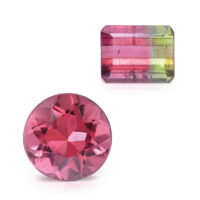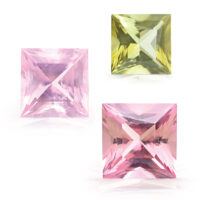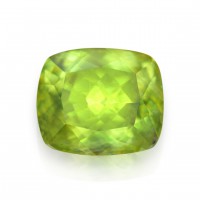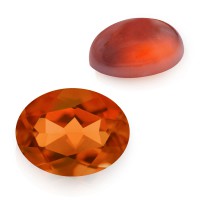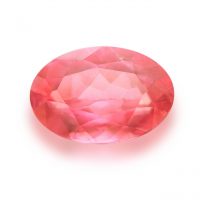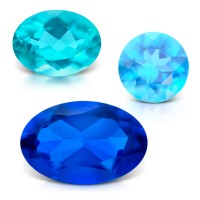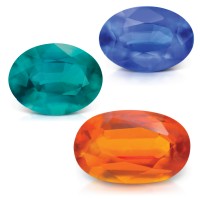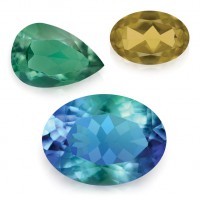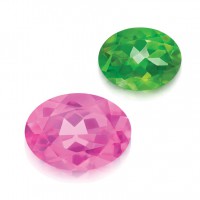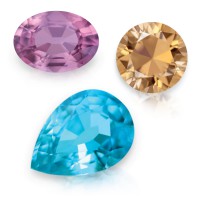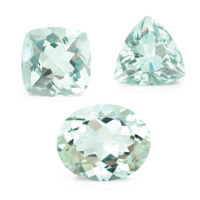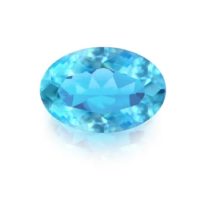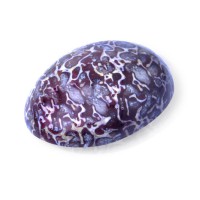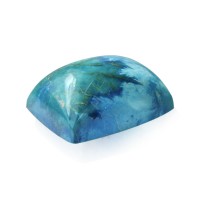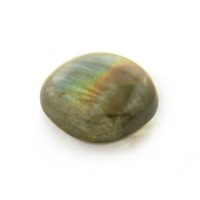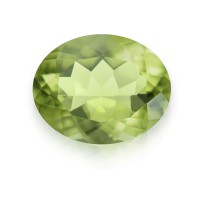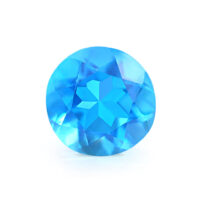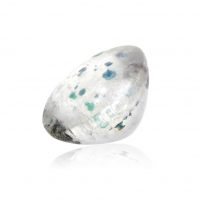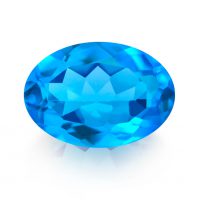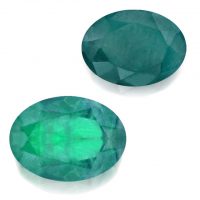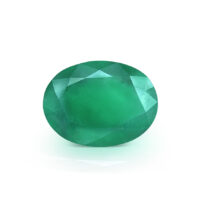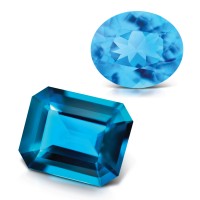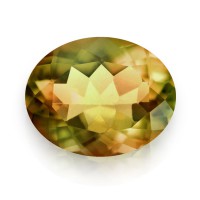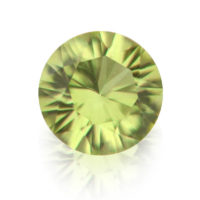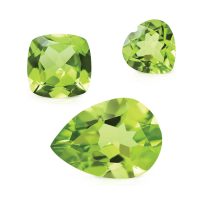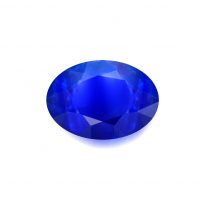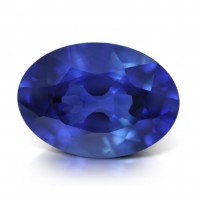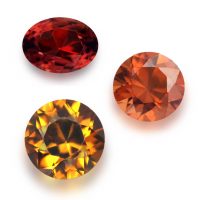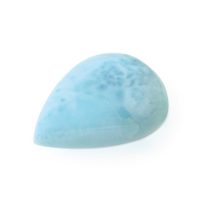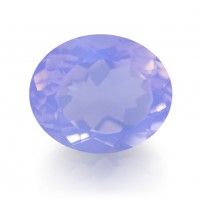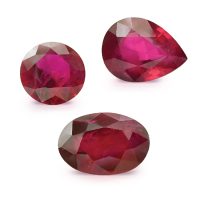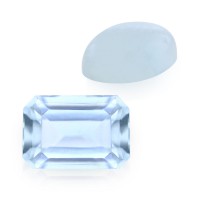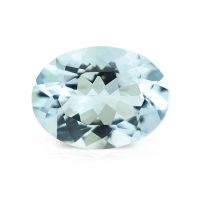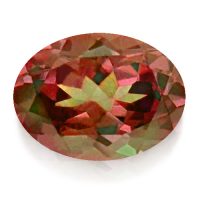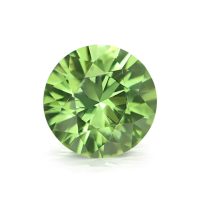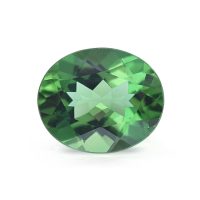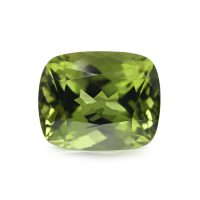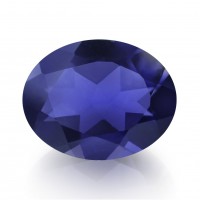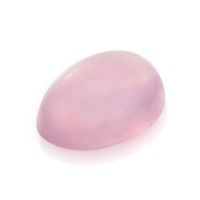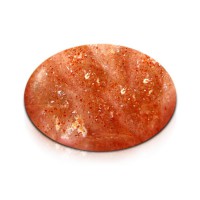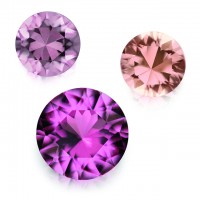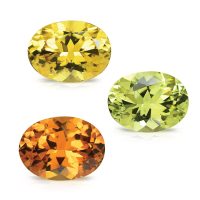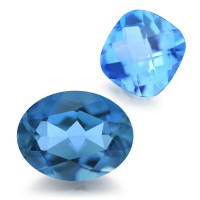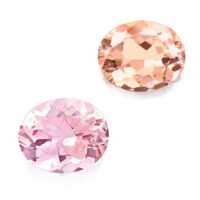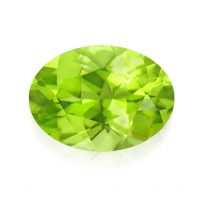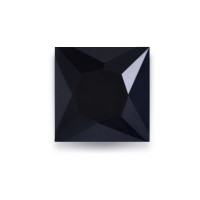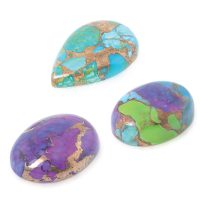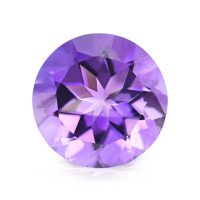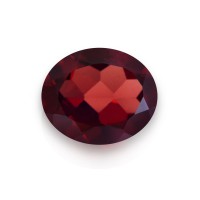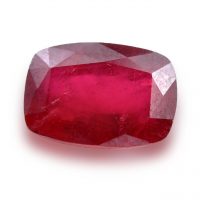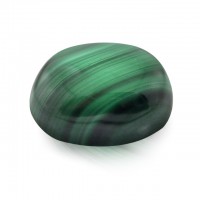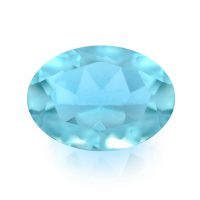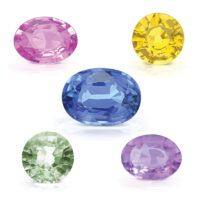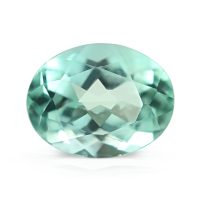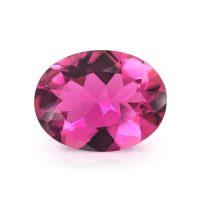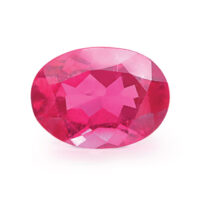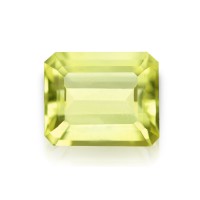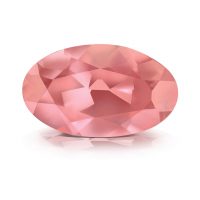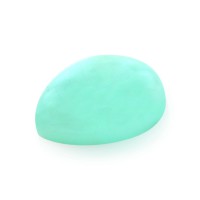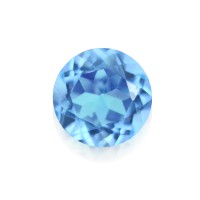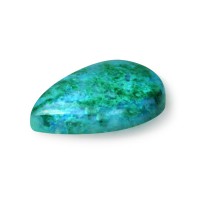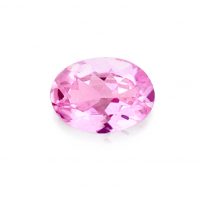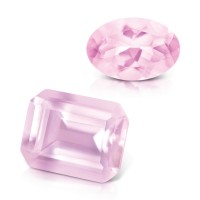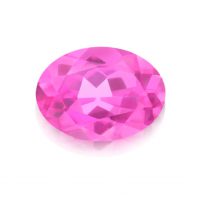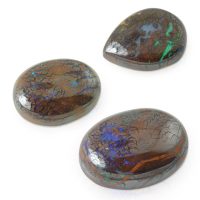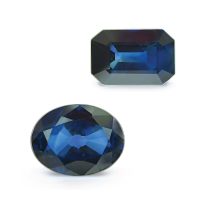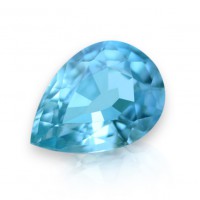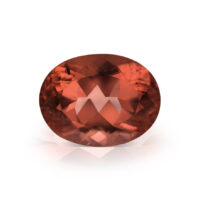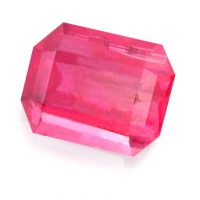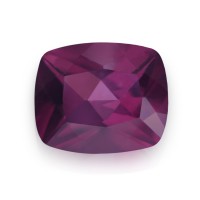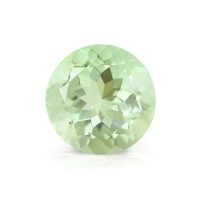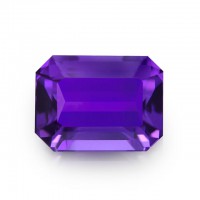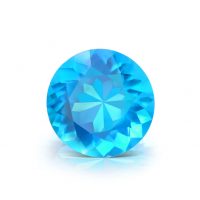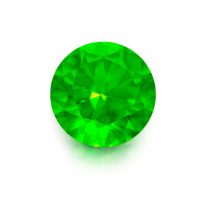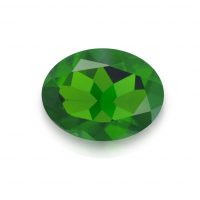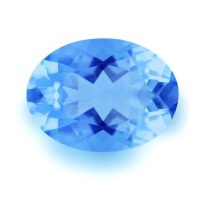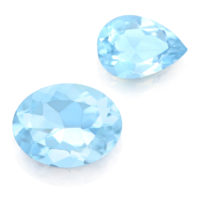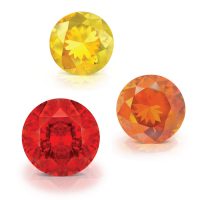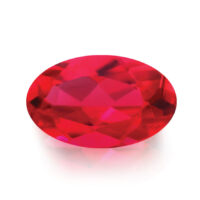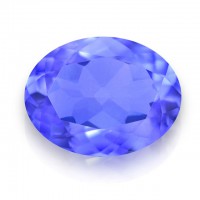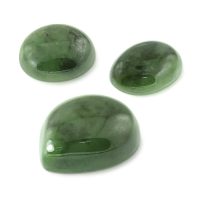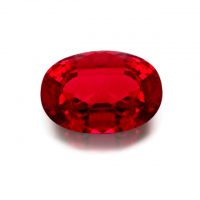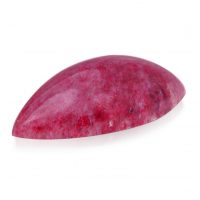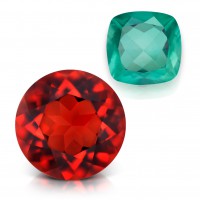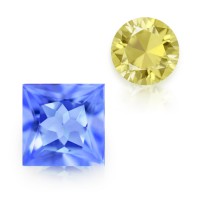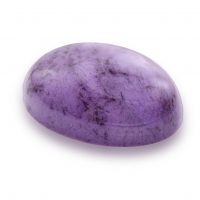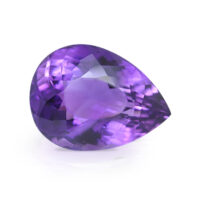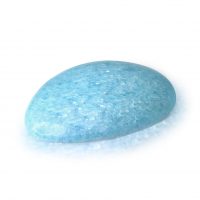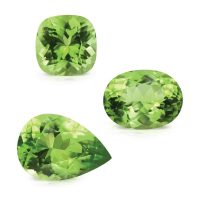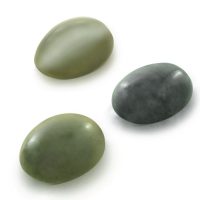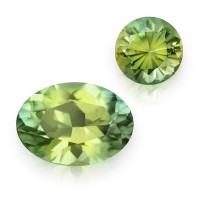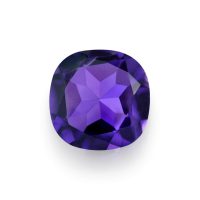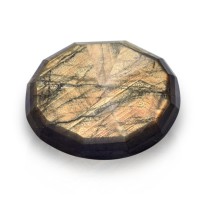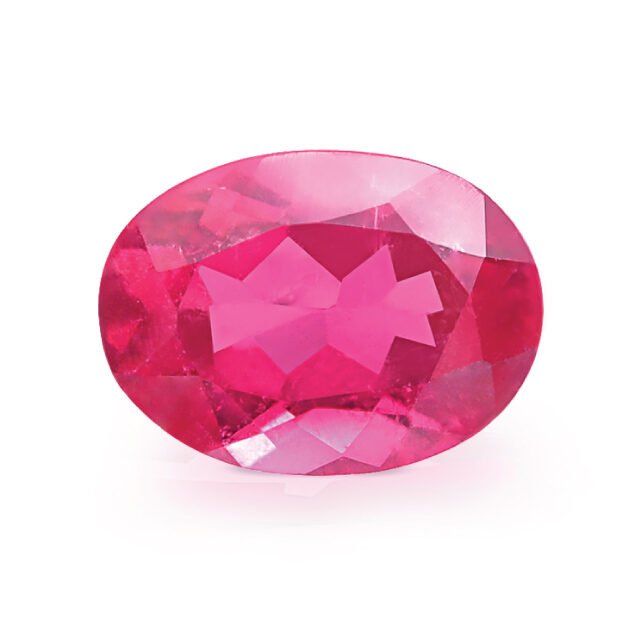

Hailing from the famous Ouro Fino Mine in the northeastern Brazilian state of Minas Gerais (General Mines), Ouro Fino (Fine Gold) is one of the world’s first premium Rubellites. Discovered in 1979, Ouro Fino Rubellite’s wonderful, rare natural cocktail of purplish-reds, high-clarity and optimal lapidary, afford an exceptionally colorful brilliance. Along with Rubellite from Brazil’s famed Cruzeiro Mine, Ouro Fino Rubellite are considered to be among the finest ever unearthed. Ouro Fino was ostensibly depleted by 1985, with its prized Rubellites vaulted for over 30 years. Testament to our Gem Hunter’s expertise, we acquired an historic collection from a retired Brazilian trader who still had notable South American gemstones, no longer readily available. Undeniably exclusive, Rubellite from any locale has significantly increased in price and decreased in availability. Rubellite is one of those rare gemstones whose opulent colors demand a place in any serious gemstone collection.
Hardness 7 – 7.5
Refractive Index 1.624 – 1.644
Relative Density 2.82 – 3.32
Enhancement None
Beauty
Prized for its distinct reddish hue, Ouro Fino Rubellite comes in beautiful purplish-reds with a desirable medium saturation and tone, that is the marketplace ideal. A variety of Tourmaline, Rubellite is derived from the Latin ‘rubellus’ (reddish) and the Greek ‘lithos’ (stone). While red and pink are technically the same color, Rubellite is distinguished from Pink Tourmaline by its greater saturation (strength of a color) and deeper tone (lightness or darkness of a color).
Rubellite’s inclusions are a characteristic trait that is totally acceptable. Rubellite like Emerald, is classified as a Type III gemstone by the GIA (Gemological Institute of America), meaning they typically grow with many eye-visible inclusions in nature. The vast majority of Ouro Fino Rubellite mined was small and/or severely included, making larger faceted sizes unviable. While Rubellite from the Ouro Fino mine is noted for its Emerald-like ‘jardin’ (French for ‘garden’) inclusions, our gems display exceptional clarity (slightly – moderately included) for this locale.
Dependent on optimal lapidary, Ouro Fino Rubellite is always challenging for the cutter due to their characteristic inclusions, areas of internal tension inside Rubellite crystals, as well as their inherent dichroism (two colors visible when viewed from different angles). Ouro Fino Rubellite were faceted by experienced lapidaries who carefully orientated each crystal to maximize the gem’s colorful brilliance, maintaining a high-polish/luster, as well as a good shape and overall appearance (outline, profile and proportions).
In Professor Max Bauer’s classic 1904 work, ‘Precious Stones: A Popular Account of Their Characters, Occurrence and Applications’, when discussing Rubellite he warns, “The color may be so like that of certain Rubies that it is difficult, even for an expert, to discriminate between these two stones on mere inspection”. While this helps explain why items of ‘Ruby’ jewelry reportedly commissioned by Peter the Great (1672 – 1725) for the Russian Imperial Court were later discovered to be Rubellite, it also begs the questions: Is the comparison really fair? While Rubellite, like Ruby, is doubly refractive, making Ruby slightly pleochroic, Tourmaline is strongly pleochroic. Finished Rubellite will typically have the primary pure reds visible in combination with the secondary purples or pinks. Although the purer the red the higher the value, Rubellite’s purplish-reds constitute the vast majority, and in the opinion of many, are distinctive, defining this beautiful gemstone.
Rubellite is a lustrous transparent gemstone that comes in red, strong purplish-red and slight purplish-red. As stated above, pure reds with virtually no secondary purples are exceptionally scarce and demand a premium. While sometimes attractive, Rubellite with visible brownish mahogany tints will be priced accordingly. While color preferences in gems are subjective, you should be aware of the marketplace dynamics. For Rubellite, look for a happy medium that is as intense as possible, but not too dark or too light.
In Rubellite, the trace element that lends its delightful purplish-reds is manganese, but this is a double-edged sword. More manganese gives Rubellite a deeper tone and saturation, but also increases the prevalence of inclusions. This is why a clean intensely colored Rubellite, especially over 4 carats, is a veritable scarcity. Most Rubellite will have eye-visible inclusions, although this can vary a little from locale to locale. Like all Tourmaline, Rubellite can be a challenging gem for the lapidary due to its inherent dichroism. Saying this, the two-colors of Rubellite’s crystals are less of a concern for the lapidary than with Green Tourmaline and Indicolite because the secondary color isn’t as dark. Expect a variety of shapes and cuts for this gem, such as ovals, pears and rounds, often with extra pavilion facets to scintillate its colorful brilliance. As usual, look for a good shape and overall appearance.
While some gemstones look better in natural daylight and others in artificial (incandescent) light, a gemstone’s colors should ideally remain beautiful in any light source. Despite this, all Tourmalines are ‘day gems’, meaning they typically look their very best in natural light.
Tourmaline frequently garners the nickname, ‘the chameleon gem’, not only because of its multitude of colors, but also because of its historic propensity to be confused with other gemstones. Tourmaline is derived from the Sinhalese ‘turmali’, which means ‘mixed parcel’ or ‘stone with mixed colors’ and are a group of related minerals whose differences in composition result in a huge variety of colors. While there are 13 mineralogical varieties of Tourmaline, the main variety is Elbaite. Named after the island of its discovery (Elba) in Tuscany, Italy, Elbaite is the backbone of Tourmaline gemstones. A source of minerals during antiquity, Elba is best known as the island of Napoleon’s exile in 1814. Name a color and in all likelihood, you’ll find it in Tourmaline. Even pure ‘amethyst’ purples have appeared since the discovery of the Mozambique Paraíba deposit in the Mavuco area. Tourmaline’s different colors are either identified by a color prefix, such as blue-green, green and pink, or a variety name or prefix. These include Bicolor Tourmaline (two or more colors), Canary Tourmaline (intense yellow from the African nations of Malawi and Zambia), Cat’s Eye Tourmaline (chatoyant Tourmaline), Color Change Tourmaline (green to red), Cuprian Tourmaline (non-Paraíba hues, but still colored by copper and manganese), Indicolite (blue), Paraíba Tourmaline (blue to green, colored by copper and manganese), Rubellite (purplish-red), and Watermelon Tourmaline (pink interior, green exterior, just like the fruit). Another prized, but exceedingly rare variety is Chrome Tourmaline, a vivid pure green East African Dravite colored by chromium and vanadium, the same elements that make Emerald and Tsavorite. Last is Schorl (Black Tourmaline), a variety that is naturally abundant and once popular in mourning jewelry, yet now commercially scarce because it is rarely faceted. Nevertheless, interest in both Black Tourmaline and Black Spinel has increased due to the popularity of Black Diamonds.
Rarity
With only a handful of commercially significant deposits, Rubellite enjoys intense competition among international buyers. Rubellite, along with Chrome Tourmaline, Indicolite, and Paraíba Tourmaline, are the rarest and most valuable Tourmaline varieties.
Tourmaline was discovered in Brazil by the Portuguese in the 16th century at the gem fields of Minas Gerais. Other significant sources for Rubellite include, Madagascar, Mozambique, Namibia, and Nigeria. Brazil’s first Tourmaline mine, the historic Cruzeiro Mine located in São José da Safira in Minas Gerais, was an important deposit in the late 70s and early 80s. In December, 1979 Rubellite was discovered by garimpeiro (independent miner) Manoel Cardosa at the Ouro Fino Mine. Located in the Freire Cardoso district, Our Fino is 21 kilometers from Coronel Murta, on a farm owned by descendants of the municipality’s founder. Well-known for its gold deposits, Freire Cardoso district’s former name ‘Ouro Fino’ (‘fine gold’ in Portuguese) is the source of the mine’s name. Coronel Murta is a Brazilian municipality (município) belonging to the Jequitinhonha mesoregion and the Araçuaí microregion. Renowned for its fine Aquamarines and Tourmalines, Jequitinhonha is rich in gemstones.
Initially found in red soil at the hill’s base, by late spring of 1981 a significant quantity of superb Rubellites were unearthed deeper in the hill. Within weeks, over 1,000 garimpeiros were working the deposit. The quality however, justified this activity, with Keith Proctor stating, “In the last few years, much of the best Red Tourmaline, or Rubellite, produced in Brazil has come out from one small mine, the Ouro Fino…” (Gem Pegmatites Of Minas Gerais, Brazil: The Tourmalines Of The Aracuai Districts, Gems & Gemology Spring 1985).
Most of the finest gems were found in an eluvial deposit (weathered material near its point of formation) deep inside the original hill. While miners eventually reached the primary pegmatite, the small amounts of rough found were heavily included and cracked. Interestingly, the garimpeiros received 80 percent and the land owners 20 percent of all gemstones sold. It is estimated that since 1981 approximately 1,000 kilograms of low-quality Tourmaline and 50 kilograms of fine facet-grade were unearthed, with only around 10 kilograms displaying (almost) pure reds. While some limited activity lingered, by 1985 Ouro Fino was ostensibly depleted, with its esteemed Rubellite sold and vaulted.
With over 90 percent of gemstones enhanced, Rubellite is sometimes heated and/or irradiated to improve their color. Thankfully, Ouro Fino Rubellite are totally natural and unenhanced, accentuating both their rarity and desirability.
Durability & Care
Ouro Fino Rubellite is a durable gemstone (Mohs’ Hardness: 7 – 7.5) well-suited to everyday wear. Always store Ouro Fino Rubellite carefully to avoid scuffs and scratches. Clean with gentle soap and lukewarm water, scrubbing behind the gem with a very soft toothbrush as necessary. After cleaning, pat dry with a soft towel or chamois cloth.
Map Location
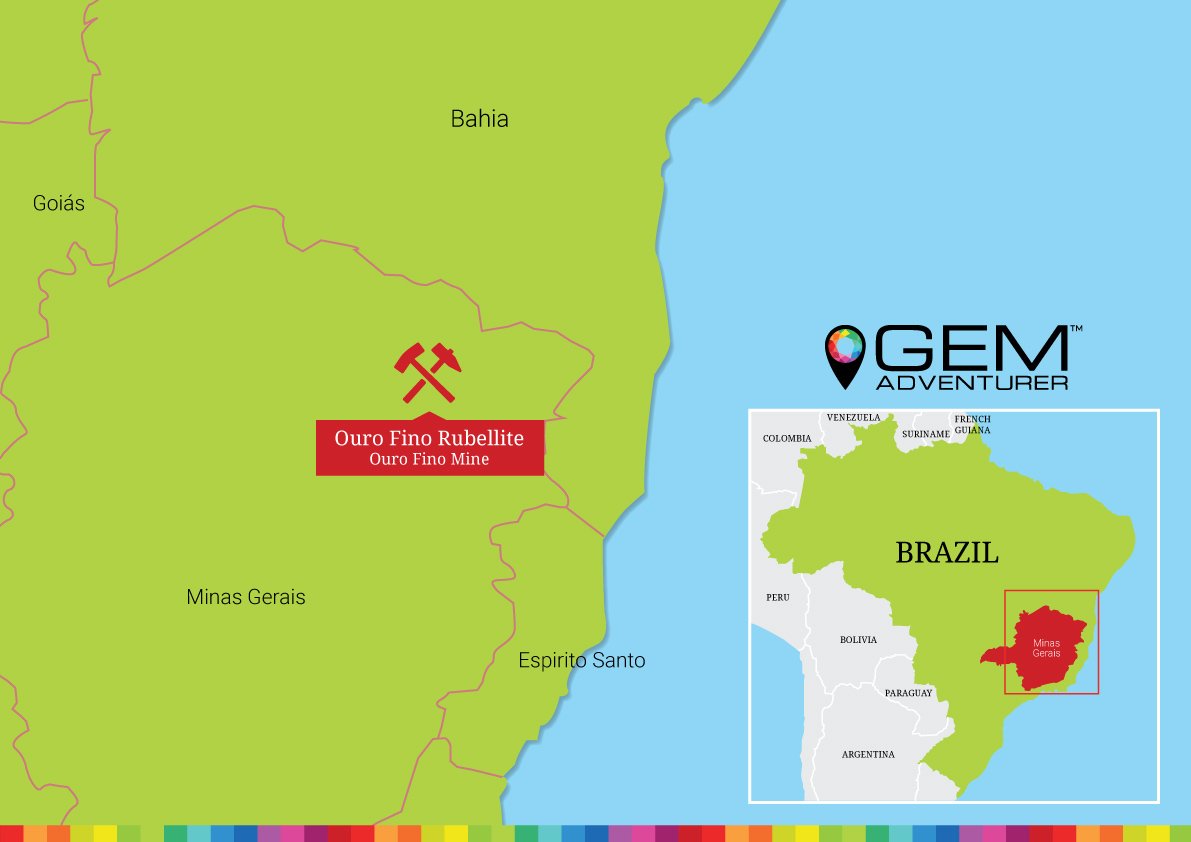
Click map to enlarge
